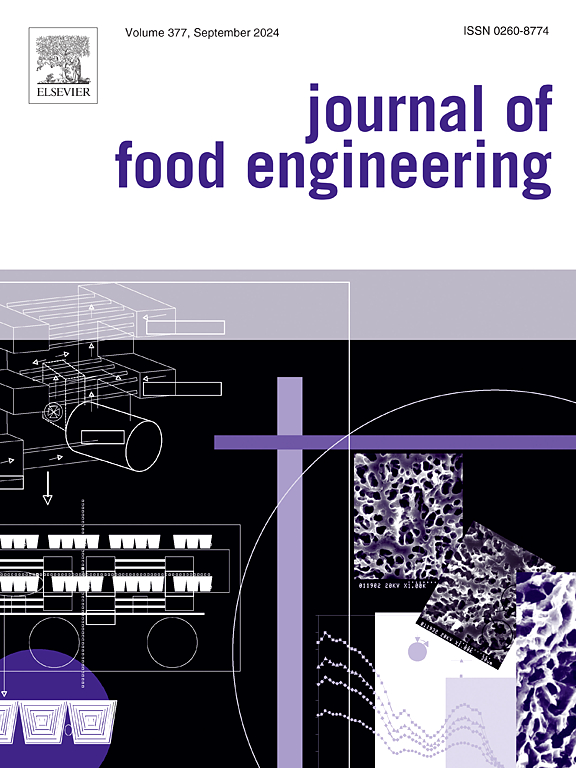Resource recovery and safe discharge of food wastewater based on membrane treatment technology: a case of mixed processing wastewater from potato and sweet potato
IF 5.3
2区 农林科学
Q1 ENGINEERING, CHEMICAL
引用次数: 0
Abstract
The mixed processing wastewater of potato and sweet potato is classified as high-concentration organic wastewater. If this wastewater is discharged directly into natural waters, it will cause severe pollution. Furthermore, the valuable components in the wastewater are difficult to recycle, resulting in great waste. Consequently, this study implemented two wastewater treatment systems, designated TS1 and TS2, which employ membrane technology. In the TS1 system, chemical oxygen demand (COD) reduced by 82.10 % and biological oxygen demand (BOD5) by 90.96 %. Approximately 50 % of polysaccharides and all of proteins were retained, thus enabling the recycling of water resources. The TS2 system was designed to ensure that the treated wastewater will comply with the requisite discharge standards. The process parameters of the system were optimized, and the operating pressure of 30 kD and 150 D was set to 0.25 MPa. The operating pressure of 10, 5 and 1 kD membranes was set to 0.3 MPa, while the inlet temperature of the mixed wastewater was set at 27 °C. The operational cycle of the 30 kD, 5 kD and 150 D ultrafiltration membranes was 30 min. The working time of the 10 kD ultrafiltration membrane was 35 min. The working time of the 1 kD ultrafiltration membrane was 20 min. A wastewater treatment system was developed that, by modifying the system parameters, can treat wastewater produced by a range of fruits and vegetables. Furthermore, an assessment of the method's feasibility was conducted. The energy consumption ranged from 0.37 to 0.86 kWh/m3, and an acid-base alternating cleaning-in-place (CIP) protocol was employed. This system presents an innovative approach to the treatment of wastewater from fruits and vegetables.

基于膜处理技术的食品废水资源化回收与安全排放——以马铃薯与红薯混合加工废水为例
将马铃薯与甘薯混合加工废水归为高浓度有机废水。如果这些废水直接排放到自然水体中,将会造成严重的污染。此外,废水中有价值的成分难以回收利用,造成了巨大的浪费。因此,本研究实施了两个采用膜技术的废水处理系统TS1和TS2。在TS1系统中,化学需氧量(COD)降低82.10%,生物需氧量(BOD5)降低90.96%。大约50%的多糖和所有的蛋白质被保留,从而使水资源的循环利用成为可能。TS2系统的设计是为了确保处理后的废水符合规定的排放标准。对系统工艺参数进行了优化,将30 kD、150 D的操作压力设定为0.25 MPa。10、5、1 kD膜的操作压力分别设置为0.3 MPa,混合废水的入口温度设置为27℃。30 kD、5 kD和150 D超滤膜的运行周期为30 min, 10 kD超滤膜的工作时间为35 min, 1 kD超滤膜的工作时间为20 min。通过修改系统参数,开发了一种废水处理系统,可以处理多种果蔬产生的废水。并对该方法的可行性进行了评估。能耗范围为0.37 ~ 0.86 kWh/m3,采用酸碱交替就地清洗(CIP)方案。该系统提出了一种处理水果和蔬菜废水的创新方法。
本文章由计算机程序翻译,如有差异,请以英文原文为准。
求助全文
约1分钟内获得全文
求助全文
来源期刊

Journal of Food Engineering
工程技术-工程:化工
CiteScore
11.80
自引率
5.50%
发文量
275
审稿时长
24 days
期刊介绍:
The journal publishes original research and review papers on any subject at the interface between food and engineering, particularly those of relevance to industry, including:
Engineering properties of foods, food physics and physical chemistry; processing, measurement, control, packaging, storage and distribution; engineering aspects of the design and production of novel foods and of food service and catering; design and operation of food processes, plant and equipment; economics of food engineering, including the economics of alternative processes.
Accounts of food engineering achievements are of particular value.
 求助内容:
求助内容: 应助结果提醒方式:
应助结果提醒方式:


